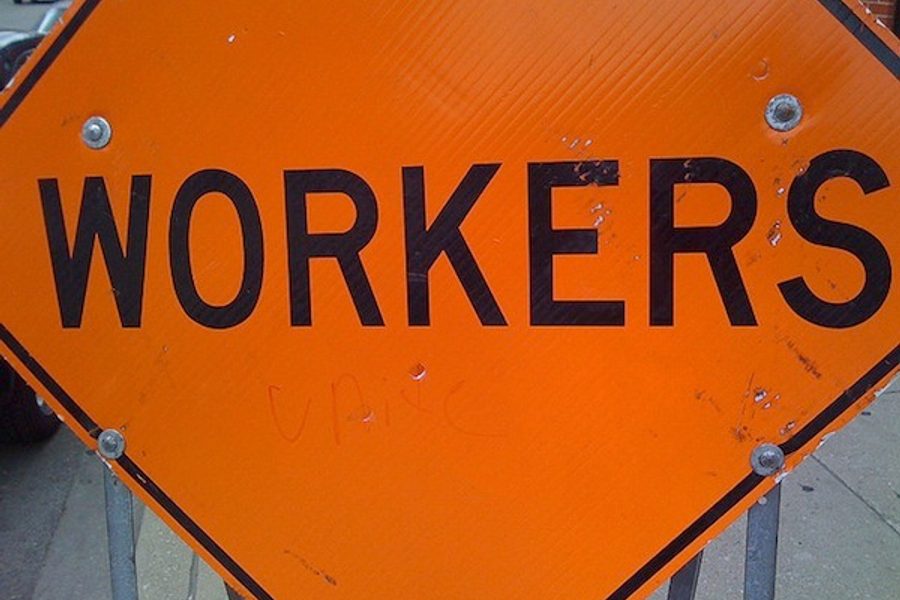
A new report by Robert Bruno and Frank Manzo of the University of Illinois, The State of Working Illinois 2013: Labor in the Land of Lincoln, paints an all-too-familiar portrait of a state economy that has righted itself from free-fall to “tepid growth” but has yet to reach pre-recession levels. With decreased labor-force participation, nearly 10 percent unemployment, wage stagnation and the top 1 percent earning 635 percent more than the median employed worker, Illinois has a long way to go before true recovery.
But unlike other accounts of today’s economic woes, the authors don’t attribute the blame solely to the global financial collapse. The report’s findings strongly suggest that the decline of unionization has played a considerable role in the increase of income inequality in Illinois, which can in turn slow economic growth. The report also suggests that lags in union membership put a strain on the social safety net, sapping resources that could otherwise be invested to speed the state’s recovery.
The State of Working Illinois, released Tuesday, found the union membership among working-age Illinois residents has fallen from 20.6 percent in 2002 to 17.2 percent. The findings also suggest that this decline may have been a factor in pushing income inequality to extremes. The salary boost of belonging to a union worker — some $10,682 for workers making a median wage of $43,687 — goes up for low-income workers. The bottom 25 percent of nonunion earners make an average of $15,471, while the bottom 25 percent of union earners makers $27,406. A similar gap appears in the bottom 10 percent of each group, with union workers earning an average of $14,685 and non-union workers earning an average of $3,701. The authors conclude that with the power to considerably boost incomes in the lowest brackets, unionization can prevent the lower-earning workers from descending into poverty.
At the other end of the spectrum, union gains are more modest: For the top 25 percent of union workers, incomes average $61,884, compared with $57,692 for nonunion workers. And, strikingly, the top 10 and 1 percent of nonunion workers actually make more than their unionized counterparts. Overall, this means that union wages are far more compressed than nonunion wages in the state, with a $100,319 discrepancy between the highest- and lowest-earning brackets of union workers, compared with a $296,404 gap among nonunion workers.
According to coauthor Frank Manzo, some degree of income inequality isn’t necessarily a bad thing. It can “encourage hard work, the acquisition of skills and education, and innovation.” But “when income inequality gets too high, like the levels we see today, it can negatively impact economic growth.” This is because “the ‘marginal costs’ of inequality — such as lower equality of opportunity and lower class mobility, declining middle and working class wages, higher chances of financial crises, and even decreased national happiness — are outweighing the ‘marginal benefits,’” Manzo explains.
Given this, the report’s findings indicate that higher unionization could help shrink Illinois’ income gaps and lead to economic growth.
There’s another way that unions can be a powerful agent to combat the detrimental effects of weak economies. Despite some improvement, Illinois workers still have only “somewhat more financial security and slightly higher prospects for finding a job” than during the darkest days of the recession. Even under these grim conditions, unionized workers generally have higher wages and have more financial security for their retirement — benefits that nonunion workers don’t always enjoy, rendering them more vulnerable to the dire effects of economic recession.
This means that lower unionization rates not only hurt workers, but also put a strain on Illinois’ social safety net. With union membership on the decline, the authors hypothesize that the growing ranks of nonunion workers are sapping public resources that could otherwise be used to boost the economy by, for instance, “subsidizing college education and investing in early childhood education programs” — investments that the authors suggest would improve Illinois’ long-term labor market prospects.
The authors conclude by recommending that Illinois help combat the decline of unionization. The state could, for example, require employers to post notices in every workplace detailing the “collective acts to improve pay, working conditions, and job-related problems that are lawful even if workers are not in a union” so that workers know it is their legal right to seek justice and improved working conditions.
Although the authors make clear that cooperation from the state — in the form of investments in public infrastructure, increases in the minimum wage and reforming the tax code — is vital for positive economic growth, The State of Working Illinois shows that unions can provide workers and economies with invaluable armor to withstand crises like the Great Recession.




